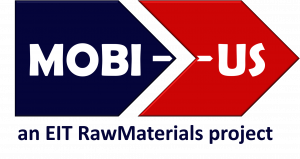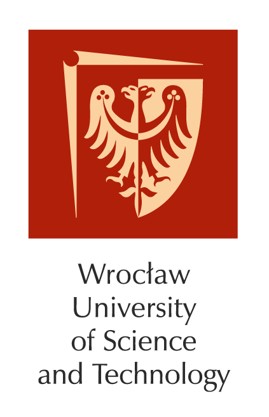
Pathway 1


GEOMATICS / ENVIRONMENTAL GEOLOGY, GEOLOGY
Students of WUST study in their first (summer) semester 30 ECTS in Wroclaw starting the Mining and Geology MSc / Geodesy and Cartography MSc and can follow in Zagreb (winter semester) specializing in courses with strong mineralogy and petrography profile which makes them specialized in mineral resource exploration competences. For the third (summer) semester, the students return to Wroclaw to complete the Mining and Geology MSc in the Geomatics for Mineral Resource Management specialization.
CONTACT
Prof. dr. sc. Stanko Ružičić:
Geotechnical and Environmental Engineering specialisation

1st - summer [ECTS]
Theory and practice in geomechanics [6]
Computer Aided Geological Modelling and Geostatistics [5]
Project management, appraisal and Risk Evaluation [4]
Engineering Geophysics [3]
Integrated analysis of deformations in geomechanical engineering [5]
Occupational health and safety [2]
Environmental chemistry [5]
[30]

3rd - summer [ECTS]
Mineral processing systems [3]
Principles and application of InSAR and GIS in mining [5]
Digital mine [2]
Free elective [2]
Diploma seminar [2]
Foreign language [2]
Master thesis [14]
[30]
Geomatics specialisation

1st - summer [ECTS]
Physics - the structure of matter [2]
Foreign language [2]
Advanced numerical calculation methods [4]
Advanced geospatial analysis [5]
Geostatistics [5]
Special measurements [4]
Selected topics in GNSS [4]
GIS programming 1 [4]
[30]

3rd - summer [ECTS]
Geoinformation project management [2]
Selected topics in information technologies [3]
Distributed spatial databases [3]
Management of company development [2]
Free elective [3]
Diploma seminar + Master thesis [15]
[30]

Course descriptions of the mobility semester
- Aim: Introduction to surface geophysical research with practical application of methods in defining geological structure and terrain composition.
- Requirements: Basic courses in physics.
- Expected outcomes: Students will be able to:
1) Demonstrate understanding of theoretical principles that are base for geophysical methods.
2) Define research methodology and data to be used.
3) Process and analyze collected geophysical data (electric, seismic and magnetic).
4) Apply appropriate modelling methodology.
5) Infer physical properties of the underground by surface geophysical methods.
- Aim: Mastering basic knowledge in analytical methods and techniques that are applied in geosciences for determination of chemical and mineralogical composition, crystal structure, granulometry and morphological properties of minerals, rocks, recent sediments, and soil.
- Requirements: None.
- Expected outcomes: Students will be able to:
1) explain specific analytical method, basic assumptions sample selection and characteristics of the instruments;
2) prepare geological sample for microthermometry of fluid inclusions, XRD and AAS method;
3) recalculate absorbance into concentrations within the sample;
4) interpret microthermometrical data;
5) prepare data in various graphs and tables;
6) to interpret the powder XRD results and determine the qualitative and quantitative mineralogical composition;
7) to use the IR spectroscopy in geosciences and elucidate the obtained IR spectra;
8) to use the laser diffraction (LD) in determination of granulometric properties of sediments and soils;
9) to apply the appropriate electronic microcopy methods (FESEM, HRTEM) in their research and understand obtained results.
- Aim: Students will get acquainted with theory and practice of exploration geochemistry, i.e. with usage of geochemical principles in finding geochemical anomaly caused by ore deposit. Students will learn principles of primary and secondary dispersion, trace element geochemistry, sampling media, different chemical analyses of geological materials and geochemical data interpretation. Students will develop their communication skills through oral presentation and report writing.
- Requirements: Course enrolment requirements and required entry competences: Knowledge of physical geology, mineralogy, petrology, geochemistry and economic geology (geology of ore deposits).
- Expected outcomes: Upon completion of this course, students will be able to:
1) demonstrate a broad and coherent understanding of theoretical and practical aspects of geochemical analyses of geological materials (e.g. water, soil, rock, sediment, vegetation) and express this verbally and through written means;
2) apply sampling techniques in practice; this will demonstrate the student’s ability to analyze and evaluate information to complete a particular activity;
3) apply sample preparation techniques and understand their limitations; and by doing so the student will also demonstrate the ability to apply knowledge and skills, to work autonomously and use well-developed judgment;
4) understand the limitations in data interpretation due to field conditions, sample density and contamination issues; and therefore, demonstrate the ability to apply skills and knowledge to show autonomy and well-developed judgment;
5) demonstrate the ability to analyze and evaluate information in order to interpret and present geochemical data and explain the distribution of data and identification of geochemical anomalies verbally and in written reports.
- Aim: Introduction to and selective application of analytical methods in the investigation of lithified and non-lithified sediments and soils. Mastery of techniques and skills in investigation of sediments, sample preparation, quantitative and qualitative estimation of mineral composition, granulometry and morphometrics. Mastery of techniques and skills in interpretation, classification and presentation of the results, acquired by the methods of investigation of sediments.
- Requirements: Sedimentary petrology course – passed exam. Interest in sediments research.
- Expected outcomes: Students will be able to:
1) identify and describe various analytical methods for the investigation of lithified and non-lithified sediments and soils.
2) define and describe, in the field and in the laboratory, various types of lithified and non-lithified sediments and soils.
3) define the nomenclature of lithified and non-lithified sediments and soils.
4) present the results of the investigation of lithified and non-lithified sediments and soils.
5) explain formation processes for lithified and nonlithified sediments and soils.
6) explain and summarize the basic methods for investigation of lithified and non-lithified sediments and soils.
7) define and conduct the project for field and laboratory investigation of lithified and non-lithified sediments and soils.
- Aim: The major goal of this course is to ger students acquainted with the basic knowledge about the role of mineralogy in various aspects of environment; e.g. importance of mineralogy in resolving specific problems in environment such as: contamination of environment, waste management, land use, remediation strategies, environmental impact analysis and risk assessment, preservation and restoration of cultural heritage.
- Requirements: The requirement for this course is completed undergraduate studies.
- Expected outcomes: Students will be able to:
1) define and describe mineralogy of the main environmental systems (soil minerals, minerals of recent marine sediments, mineral particles in atmosphere);
2) recognize and explain physical, chemical and biological processes in soils and sediments and to implement this knowledge with other professions dealing with protection and use of soils and sediments;
3) compare and distinguish mineral composition of main environmental systems and based on that to define their physical and chemical characteristics;
4) based on mineralogical composition and physical-chemical surface characteristics of sediments, establish its reactivity and holding capacity for contaminants;
5) apply new knowledge about specific minerals in environmental protection (landfills, remediation, and storage of radioactive waste).
- Aim: Objectives of the course are to introduce students with:
1) exploration of stone deposits (natural stone and aggregate);
2) natural (building) stone and aggregate and their properties and usability. - Requirements: None.
- Expected outcomes: After successfully mastering a course, students will be able to:
1) classify rocks regarding application as aggregate stone (including sand and gravel for civil engineering purposes) and natural (building) stone and determine stone properties;
2. explain the influence of the geological and structural characteristics of the rock mass on the possibility of obtaining various stone products from aggregates to monoliths;
3. to assess the usability of rock mass in the form of blocks in natural stone deposits with respect to the petrographic and structural features and used exploitation technologies;
4. to evaluate the possibility of installing natural stone in regard to its structural features and physical-mechanical properties;
5. to conclude about the influence of basic geological and structural features of rock mass on the possibility of exploitation, slope stability in quarries, blasting, the effect of excavation, crushing and grinding of stone.
- Aim: Adoption of basic concepts from the area of probability and their application in building models for statistical analysis. Getting acquainted with basic statistical methods and acquiring skills for their application in technology and natural sciences.
- Requirements:
Conditions: none.
Competences: basic calculus (function derivative, integral, limit). - Expected outcomes: Use basic knowledge in the field of technical and natural sciences. Solve medium complex problems in geological engineering and geology, as well as in other areas which use the results of research in geological engineering and geology and apply them. Select and apply the appropriate analytical methods and procedures and equipment required in laboratory and field research. Use current information technologies to collect and process data collected through new research or from existing literature, databases and other sources of information. Analyse the chemical and morphological composition of the rock. Understand the impact of petroleum – mining works on the environment. Supervise the work and operation of oil and gas production, equipping, production, transport and storage systems. Understand the geological processes, rock formation and mineral raw materials deposits formation, engineering geo-geological and hydrogeological relationships, soil mechanics and rocks, and of mineral and chemical composition of rock. Planning, conducting and controlling mining and geophysical investigations for the purpose of establishing reserves of solid mineral raw materials and conducting engineering works in soil and rock. Analysis and interpretation of data collected by field and laboratory research, and determination of quality of mineral raw materials. Application of analytical and numerical methods in the assessment of the state and behavior of geological materials during engineering works and construction of various geotechnical objects in soil and rocks. Planning and implementation of geotechnical and geophysical investigations and their monitoring for the purpose of carrying out engineering works in soil and rock and establishing reserves of solid mineral raw materials. Analysis and interpretation of field and laboratory research results. Understanding the complex physical-chemical relations in the air, water, soil, multiphase fluid flow through the soil / rock, geochemical and mineral relations in the soil and rock, and the ability to identify, quantify and solve the associated problems. Modeling and numerical calculations of environmental pollution spreads.
After passing the exam, students will be able to:
– define the concept of a random event and basic operations with events;
– apply basic combinatorial terms (variations, permutations, combinations), the complete probability formula and the Bayesian formula when calculating probabilities of events;
– explain the concept of discrete and continuous random variable and calculate their parameters (mathematical expectation, variance, standard deviation);
– define binomial, Poisson and normal distribution and apply them in calculating probabilities of events;
– graphically display statistical data and calculate the basic characteristics of the data set (arithmetic mean, variance, standard deviation);
– perform a point and an interval estimate of an expectation and variance of a random variable;
– test a statistical hypothesis with a properly selected statistical test (F-test, t-test, chi-square test);
– apply a linear regression model when examining the dependence of the two characteristics of the observed phenomenon;
– correctly interpret the results of statistical methods;
– apply programming language R in solving statistical problems.

